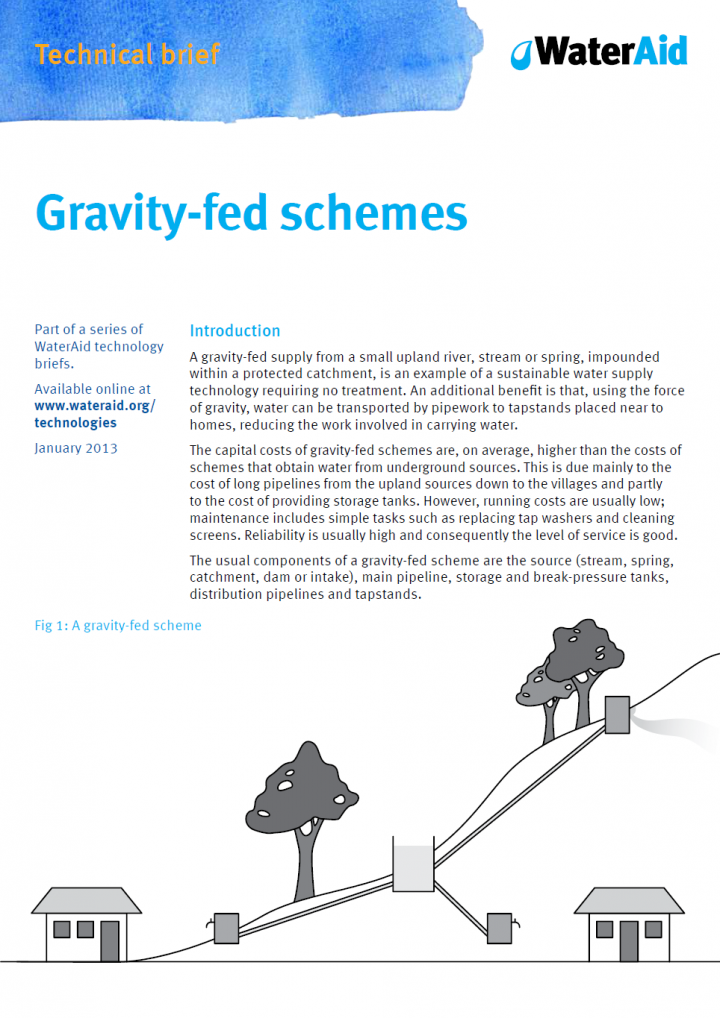
Published in: 2013
Pages: 8
Publisher:
WaterAid
Author:
WaterAid
Uploaded by:
SuSanA Admin
Partner profile:
common upload
2280 Views
72 Downloads
A gravity-fed supply from a small upland river, stream or spring, impounded within a protected catchment, is an example of a sustainable water supply technology requiring no treatment. An additional benefit is that, using the force of gravity, water can be transported by pipework to tapstands placed near to homes, reducing the work involved in carrying water.
The capital costs of gravity-fed schemes are, on average, higher than the costs of schemes that obtain water from underground sources. This is due mainly to the cost of long pipelines from the upland sources down to the villages and partly to the cost of providing storage tanks. However, running costs are usually low; maintenance includes simple tasks such as replacing tap washers and cleaning screens. Reliability is usually high and consequently the level of service is good. The usual components of a gravity-fed scheme are the source (stream, spring, catchment, dam or intake), main pipeline, storage and break-pressure tanks, distribution pipelines and tapstands.
Bibliographic information
WaterAid (2013). Gravity-fed schemes. WaterAid
Filter tags
English Politicians and local decision makers Practitioners Technical drawings














